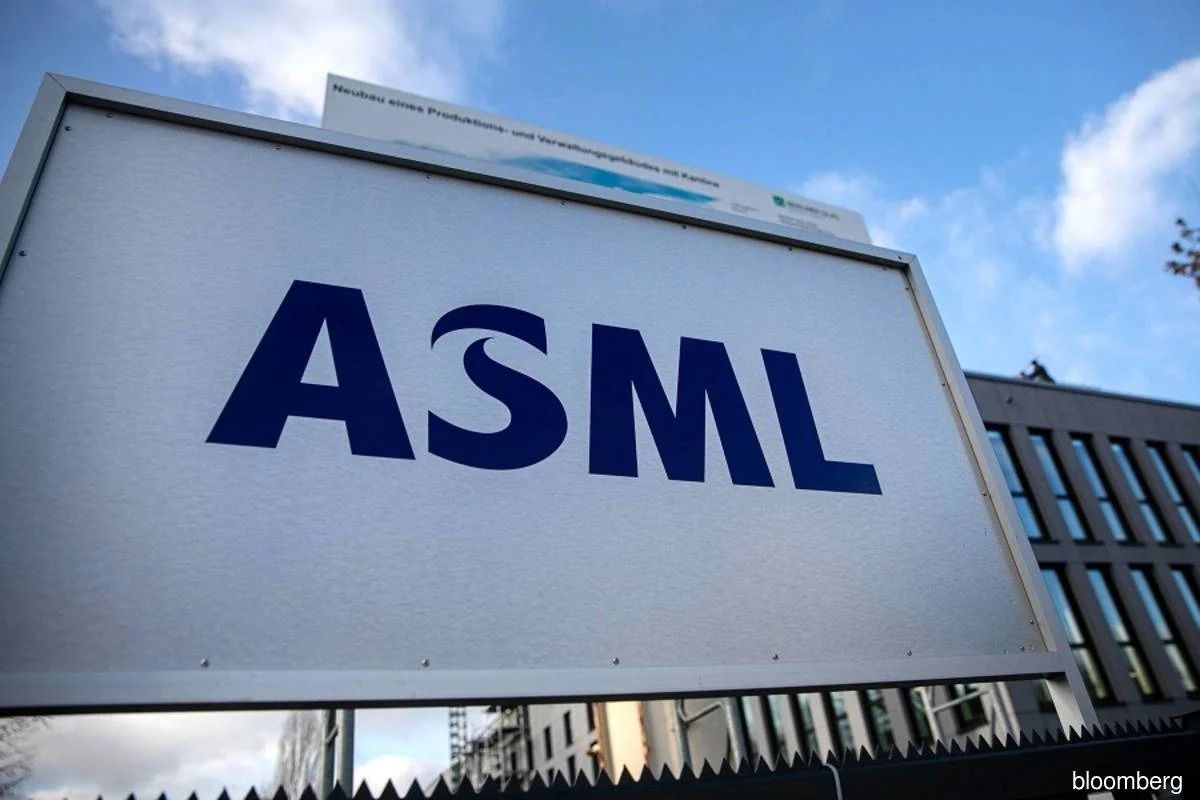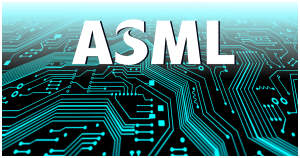Technology
US-China Tech War: ASML Halts Shipments of Key Chip-Making Equipment to China

US-China Tech War: ASML Halts Shipments of Key Chip-Making Equipment to China
Introduction
Hi, I’m John Smith, a tech journalist and analyst with over 10 years of experience covering the global semiconductor industry. In this article, I will explain why ASML, the Dutch company that makes the world’s most advanced chip-making machines, has stopped selling its key equipment to China, and what this means for the US-China tech war, the global supply chain, and the future of innovation.
What is ASML and why is it important?
ASML is the world’s largest maker of lithography machines, which use lasers to print minuscule patterns on silicon wafers as part of the manufacturing process of microchips. These chips power everything from smartphones and computers to cars and military hardware. ASML is the only company that can produce extreme ultraviolet (EUV) lithography machines, which can create chips with features as small as 5 nanometers, or about the width of a strand of DNA. These chips are faster, more powerful, and more energy-efficient than the current generation of chips, and are essential for the development of emerging technologies such as artificial intelligence, 5G, and quantum computing.

Picture by: https://kauppa.aican.fi/semiconductor-equipment-maker-asml-profit-rises-on-record-bookings-tt-NYpjYAse
Why has ASML stopped selling its equipment to China?
Since 2019, the Dutch government has blocked ASML from exporting its EUV machines to China, under pressure from the US, which sees China as a strategic rival and a potential threat to its technological supremacy. The US has accused China of stealing intellectual property, violating trade rules, and subsidizing its domestic chip industry, which aims to become self-reliant and reduce its dependence on foreign suppliers. The US has also imposed export controls and sanctions on several Chinese chip makers, such as Huawei and SMIC, limiting their access to US technology and software. In October 2020, the US announced that it would require licenses for companies exporting chips to China using US tools or software, no matter where they are made in the world.
In February 2023, the Dutch government announced that it would further restrict some tech exports to China, citing national and international security grounds. The new measures will affect “very specific technologies in the semiconductor production cycle,” including “the most advanced Deep Ultra Violet (DUV) immersion lithography and deposition,” according to the Dutch trade minister Liesje Schreinemacher. This means that ASML will not be able to sell its most advanced DUV machines to China, which are currently used by Chinese chip makers to produce chips with features as small as 14 nanometers. ASML said that it expects the restrictions to apply to its “most advanced immersion DUV systems,” and that it does not expect them to have a material effect on its financial outlook.
China has strongly protested against the Dutch move, calling it a violation of its right to develop and an abuse of export control measures by certain countries. China has also launched a formal complaint against the move at the World Trade Organization. China has frequently called the US a “tech hegemony” and accused it of trying to stifle China’s technological progress and innovation.
What are the implications of ASML’s decision for the US-China tech war, the global supply chain, and the future of innovation?
ASML’s decision to halt shipments of its key equipment to China is a significant blow to China’s ambitions to become a global leader in the semiconductor industry and to achieve technological self-reliance. China currently relies heavily on foreign suppliers for its chip-making equipment, materials, and designs, and imports more than 80% of its chip needs. Without access to ASML’s machines, China will not be able to produce the most advanced chips that are required for the development of cutting-edge technologies such as AI, 5G, and quantum computing. China will also face challenges in meeting the growing demand for chips from its domestic market, especially in sectors such as smartphones, cloud computing, and electric vehicles.
ASML’s decision is also a major win for the US, which has been leading a global campaign to isolate China from the semiconductor supply chain and to maintain its technological edge over its rival. The US has been pushing its allies, such as the Netherlands and Japan, to adopt similar restrictions on chip exports to China, and to cooperate with the US in developing alternative sources of chip supply and innovation. The US has also been investing heavily in its own chip industry, through initiatives such as the CHIPS for America Act, which provides incentives and funding for domestic chip production and research.

Image by: https://asiatimes.com
However, ASML’s decision also poses risks and challenges for the global semiconductor industry, which is highly interdependent and complex. ASML’s machines are not only used by Chinese chip makers, but also by other major players in the industry, such as Samsung, TSMC, and Intel, who supply chips to customers around the world, including China. ASML’s decision could disrupt the global supply chain and create uncertainties and inefficiencies for the industry. ASML’s decision could also trigger a backlash from China, which could retaliate by imposing tariffs, sanctions, or other measures on foreign chip suppliers or customers. ASML’s decision could also spur China to accelerate its efforts to develop its own chip-making equipment and technology, which could increase the competition and fragmentation in the industry.
ASML’s decision also has implications for the future of innovation and cooperation in the semiconductor industry, which is vital for the advancement of science and technology. ASML’s machines are the result of decades of research and development, involving collaboration and knowledge-sharing among scientists, engineers, and companies from different countries and regions. ASML’s decision could undermine the spirit of openness and collaboration that has driven the innovation and growth of the industry, and could create barriers and divisions that could hamper the progress and potential of the industry.
Conclusion
ASML’s decision to stop selling its key chip-making equipment to China is a significant development in the ongoing US-China tech war, which has profound implications for the global semiconductor industry, the global supply chain, and the future of innovation. ASML’s decision reflects the growing tensions and conflicts between the US and China over the control and access of critical technologies, and the diverging interests and values of different countries and regions in the industry. ASML’s decision also raises questions and challenges for the industry, such as how to balance security and competitiveness, how to foster cooperation and trust, and how to ensure the sustainability and resilience of the industry. ASML’s decision is not the end of the story, but rather the beginning of a new chapter in the history of the semiconductor industry, which will shape the future of the world.
Technology
Web App Security: Best Practices for 2026

Introduction
What is life without web apps? For most, be it business, academics, healthcare, ecommerce, or any other industry, they are the lifeline. Unfortunately, like us, even the hackers know this. And we know what their only intent is to sabotage the web app, steal the data, and sell it to make a huge profit. For you, this translates into reputational and financial loss. So, you need to counter it proactively by integrating web application security best practices.
We know how technically advanced hackers are, and to ensure you keep your business safe from these cyberthreats, we at Unified Infotech have come up with a practical guide. Implement the practices mentioned. It will help keep your team ahead of the hackers, make your users happy, and ensure your business is safe
The New Face of Threats: Why Modern Web Security Demands More

2026 isn’t like ten years ago. Now attackers use automated bots, exploit supply-chain dependencies, target APIs, and even try social tricks on your support team. Secure web app development used to mean a locked login page; now it’s about endpoint protection, smart authentication flows, data encryption everywhere, and fast patching.
If you’re still using last decade’s playbook, you’re leaving the door wide open. Let’s fix that.
The Ultimate Web App Security Checklist 2026
Every project (from startup MVPs to Fortune 500 dashboards) should start with this web app security checklist 2026:
- Update everything: Libraries, frameworks, web/app servers. Outdated dependencies top the OWASP threat list.
- Use strong authentication: Enforce multi-factor authentication (2FA/MFA). Never rely on password-only logins.
- Control access: Apply least privilege; build RBAC/ABAC into your backend. No public admin panels or open test routes.
- Encrypt all data: In transit (SSL/TLS only!), and at rest for sensitive fields.
- Validate user input: Never trust the client. All form inputs, URLs, API data, and cookies must be filtered and sanitized server-side.
- Protect APIs: Use proper tokens/Auth, rate-limiting, versioning, and error handling.
- Set up a WAF: Deploy a web app firewall (WAF) configuration to block malicious traffic and DDoS.
- Monitor and log everything: Record access, error, and admin events in a tamper-resistant way.
- Automate testing: Run static (SAST), dynamic (DAST), and pen-testing via top scanners or enterprise suites.
- Back up, test, and rehearse: Have clear disaster recovery plans, regular restore drills, and table-top incident response scenarios.
The Power of Secure Coding Practices for Web Developers
Today’s breaches happen at the code level: a forgotten input, a lazy SQL command, or a copy-paste from Stack Overflow. So, make secure coding practices for web developers part of every sprint and code review.
- Never concatenate raw user input into queries (SQL/NoSQL injection is a top risk).
- Always escape and validate fields/headers—yes, even checkboxes and hidden fields.
- Use parameterized queries or ORM frameworks for all database work.
- Hide error messages from users, but log them for internal eyes only.
- Store secrets and credentials in safe vaults—not in source control or config files.
- Prefer allowlists over denylists for uploads, file types, and redirections.
Adopting the OWASP Secure Coding Checklist or your own in-house playbook lets new hires ship secure code, every single time.
Modern Tricks: Web Application Security Best Practices 2026
Your enemy is fast and automated. So get proactive:
- Zero-trust design: Never trust internal traffic blindly. Verify everything, always.
- Role-based sessions: Use short-lived JWTs, session timeouts, and auto-revoke on privilege changes.
- Strong session management: Store sessions securely (in-memory or secure cookies), and force logout on password change.
- Content Security Policy (CSP) & Headers: Always use CSP, HSTS, X-Frame-Options, Referrer-Policy, and X-Content-Type-Options headers to block common attacks (XSS, clickjacking, MIME sniffing).
- Dependency audits: Use SCA tools (Software Composition Analysis) to spot outdated packages.
- API gateway and throttling: Every API gets rate-limited, monitored, and error responses don’t reveal internal logic.
These modern web app security techniques are your first and often the best line of defense.
Mastering Web App Data Encryption Methods
Think HTTPS is enough? Not in 2026. All serious web app data encryption methods must:
- Use industry-standard HTTPS/TLS 1.3+ for all web, API, and CDN traffic.
- Encrypt sensitive data at rest: customer info, passwords, payment cards, tokens.
- Never roll your own crypto. Use vetted libraries and keep keys in hardware security modules (HSM) or cloud equivalents.
- Salt and hash passwords with bcrypt, scrypt, or Argon2, not plain MD5/SHA1 only.
- For mobile and SPA apps, use end-to-end encryption when syncing critical user data.
- Rotate keys and certificates regularly.
Need ultra-secure? Invest in field-level encryption or envelope encryption for the most sensitive data and documents.
Strong API Security for Web Applications
2026 is the year of API attacks. APIs power SPAs, mobile apps, IoT platforms, internal microservices, and public partner integrations. That means API security for web applications must be a priority:
- Require authentication for every endpoint, even public data.
- Use rate limits to block brute force and bots.
- Validate and sanitize all input; don’t rely on client-side checks.
- Hide error details (especially in 400/500s), which could reveal system info.
- Use API gateways for centralized auth, quotas, monitoring, and traffic shaping.
- Employ versioning to control what’s exposed with legacy or public APIs.
- Log all calls, successes, and failures for real-time anomaly detection.
If your API is public, publish docs with clear security sections (expected headers, error codes, limits, etc.). For internal microservices, mutant fuzzing and contract/security testing are now standard.
The Art of Web App Firewall (WAF) Configuration
A modern web app firewall (WAF) configuration is like a 24/7 security guard. It keeps proactively blocking threats you haven’t spotted yet. Key steps:
- Deploy a WAF in front of your app and API, whether as SaaS (Cloudflare, AWS, Azure) or on-prem.
- Enable rule sets for OWASP Top 10, bots, SQLi, XSS, SSRF, and credential stuffing.
- Update policies with custom block/allow lists tuned to your app’s usage and traffic.
- Enable logging/auditing and monitor for rate anomalies or suspicious IPs.
- If you allow file uploads, scan them for malware immediately.
A tuned WAF can stop attacks before they hit your app; smart logs help you react faster to new threats.
How to Approach Secure Web App Deployment
Don’t drop the ball at the finish line. True secure web app deployment looks like:
- Provision cloud infrastructure with IaC (Infrastructure as Code) so you can audit and version-control every config.
- Encrypt all traffic inside and outside VPCs (not just edge-facing connections).
- Separate dev/staging/production environments, each with unique secrets and no shared databases.
- Turn on security monitoring pre-launch, not after a breach.
- Patch and auto-update at every layer, whether it is OS, app code, DB, container, or WAF.
- Run blue/green deployments or canary releases so you can roll back instantly if something’s off.
- Rehearse both routine and “disaster” recovery scenarios with realistic data.
Don’t Forget: People & Process Matter as Much as Code
Security is a team sport, not just a tech checklist. Make sure you:
- Train everyone (not just devs) in phishing, social engineering, and secure habits.
- Use bug bounties or third-party pen tests: fresh eyes catch what insiders miss.
- Document, review, and update policies and procedures every year, or after significant changes.
- Enforce the “four-eyes principle” for all privileged actions (at least two people—think deployments, firewall edits, etc.).
Conclusion
In 2026, the difference between a hacked app and a trusted one comes down to putting web application security best practices front and center. Nail your web app security checklist 2026, bake in secure coding practices for web developers, automate with the latest web app security tools and frameworks, and treat secure web app deployment as a critical launch step.
If you need help, partner with a custom web app development services provider like Unified Infotech that lives and breathes it. Your business and users can flourish without the fear of that next big breach.
Technology
Gurgaon Website Design: Crafting Websites That Drive Results

Introduction
In today’s digital world, having a strong online presence is very important for businesses. A website is no longer just an online brochure—it can help drive sales, connect with customers, and build your brand.
Gurgaon website design services create websites that are creative, functional, and easy to use. Businesses in Gurgaon are realizing that professional web design is essential to stand out in a competitive market. This article explains why Gurgaon website design is important and how it can help your business grow.
Understanding Gurgaon Website Design
Website design in Gurgaon is more than just making pages look good. It includes planning, technical development, and understanding how users behave. Professional designers create websites that work well, look great, and meet business goals.
Key Aspects of Gurgaon Website Design
- Responsive Design: Websites work smoothly on desktops, tablets, and mobile devices.
- User Experience (UX): Easy navigation, fast loading, and engaging content keep visitors interested.
- Aesthetic Appeal: Colors, fonts, and images match the brand and look professional.
- Functionality: Features like contact forms, online stores, and social media links are included.
By combining these elements, Gurgaon web designers make websites that look great and help turn visitors into customers.
Why Professional Website Design Matters
A professionally designed website can greatly improve your business online. Here’s why Gurgaon website design services are important:
- First Impressions Matter: Your website is often the first thing customers see. A clean, modern design builds trust and credibility.
- Better SEO: Well-structured websites with proper coding, optimized images, and mobile-friendly design rank higher in search engines.
- Engages Users: Clear navigation, interactive features, and attractive visuals keep visitors on your site longer.
- Increases Conversions: Easy-to-use forms, call-to-actions, and smart layouts encourage visitors to take action.
- Competitive Edge: A professional website helps your business stand out in Gurgaon’s busy market.
Investing in expert web design ensures your website supports your marketing and delivers real results.
Features of Effective Gurgaon Website Design
To succeed online, a website needs to look good, be easy to use, and perform well. Effective Gurgaon website design includes these features:
- Mobile Optimization: More than half of users browse on phones, so responsive design is essential.
- Fast Loading Speeds: Slow websites frustrate visitors, so speed is important.
- Secure and Reliable: HTTPS keeps browsing safe and builds trust.
- Easy Navigation: Clear menus and page layouts help users find information quickly.
- Content Management: Platforms like WordPress or custom CMS make it easy to update content.
- Visual Storytelling: High-quality images, videos, and graphics show your brand effectively.
These features improve user experience and help your website reach business goals efficiently.
Gurgaon Website Design for Different Business Needs
Different businesses require tailored website solutions to match their goals. Gurgaon web design agencies offer customized services for a wide range of industries:
- E-Commerce Websites: Optimized for online sales, secure payment gateways, and easy product management.
- Corporate Websites: Professional layouts for businesses looking to establish credibility and showcase services.
- Portfolio Websites: Creative designs for artists, photographers, and designers to display their work.
- Blogging Platforms: User-friendly designs that focus on content readability and engagement.
- Startups and SMEs: Affordable, scalable websites that help small businesses grow online.
Customizing web design according to business needs ensures that each website delivers maximum impact.
The Role of User Experience in Gurgaon Website Design
Website design plays an important role in modern business. It creates the first impression for visitors and represents the brand online. Designers focus on both appearance and functionality, ensuring websites are fast, responsive, and user-friendly. Website design also supports marketing efforts by making content easy to share and products easy to find. In short, it connects businesses with customers and helps companies reach their goals more effectively.
User experience is key to a successful website. If a site is hard to use or slow, visitors may leave. Gurgaon web designers focus on:
- Simple Navigation: Visitors can easily find what they need.
- Visual Hierarchy: Important sections and call-to-actions stand out.
- Interactive Elements: Sliders, animations, and forms keep users engaged.
- Accessibility: Websites work well for people with disabilities, expanding reach.
- Feedback Options: Chatbots, contact forms, and surveys make it easy for users to interact.
A great user experience leads to more engagement, higher conversions, and a stronger online reputation.
Features of Effective Gurgaon Website Design
A successful website needs to look good, be easy to use, and perform well. Effective Gurgaon website design includes these features:
- Mobile Optimization: Most people use phones to browse, so the site must work on all devices.
- Fast Loading Speeds: Slow websites frustrate visitors and make them leave, so speed is important.
- Secure and Reliable: HTTPS keeps browsing safe and builds trust.
- Easy Navigation: Clear menus and logical page layouts help users find information quickly.
- Content Management: Platforms like WordPress or custom CMS make updating content simple.
- Visual Storytelling: High-quality images, videos, and graphics communicate your brand effectively.
These features make the website user-friendly and help achieve business goals efficiently.
Gurgaon Website Design for Different Business Needs
Different businesses need websites that fit their goals. Gurgaon web design agencies provide custom services for many industries:
- E-Commerce Websites: Designed for online sales with secure payment options and easy product management.
- Corporate Websites: Professional layouts to build credibility and showcase services.
- Portfolio Websites: Creative designs for artists, photographers, and designers to show their work.
- Blogging Platforms: Easy-to-read designs that keep readers engaged.
- Startups and SMEs: Affordable, scalable websites that help small businesses grow online.
Tailoring web design to business needs ensures each website makes the biggest impact.
The Technology Behind Gurgaon Website Design
Modern websites rely on advanced technologies to deliver speed, functionality, and security. Gurgaon web design services use tools and frameworks such as:
- Content Management Systems (CMS): Platforms like WordPress, Joomla, and Drupal enable easy content updates.
- Front-End Technologies: HTML5, CSS3, and JavaScript create visually engaging and interactive designs.
- Back-End Development: PHP, Python, and Node.js manage server-side functionality.
- Responsive Frameworks: Bootstrap and Foundation help create mobile-friendly layouts.
- SEO Tools: Optimized code, meta tags, and structured data improve search engine rankings.
Leveraging the right technology ensures that your website performs well across devices and platforms.
Benefits of Hiring Gurgaon Website Design Agencies
Good website design offers many benefits for businesses. A well-designed website attracts visitors and keeps them engaged. It helps improve the company’s image and builds trust with customers. A clear layout and easy navigation make it simple for users to find information or make purchases. Good design also helps websites perform better on search engines, which brings more visitors. Overall, investing in quality website design can increase sales, grow audiences, and make businesses more successful online.
While DIY website builders are available, hiring a professional agency brings several advantages:
- Expertise: Access to skilled designers, developers, and SEO specialists.
- Customization: Tailored designs that match your brand identity and business goals.
- Time-Saving: Professionals handle all technical aspects, allowing you to focus on your business.
- Ongoing Support: Maintenance, updates, and troubleshooting ensure smooth operation.
- Result-Oriented Approach: Focused on conversions, user engagement, and measurable ROI.
A professional agency ensures that your website is a valuable asset, not just an online presence.
Trends in Gurgaon Website Design
Keeping up with trends ensures your website stays modern and engaging. Current trends in Gurgaon website design include:
- Minimalistic Designs: Clean layouts with simple navigation and plenty of white space.
- Dark Mode: Stylish dark-themed websites for a modern aesthetic.
- Micro-Interactions: Small animations and hover effects to enhance user engagement.
- Voice Search Optimization: Preparing for the growing use of voice assistants.
- AI Chatbots: Enhancing customer support and interactivity.
- Video Backgrounds: Engaging users instantly with dynamic content.
Adopting these trends helps businesses maintain a competitive edge and appeal to contemporary audiences.
Conclusion
Gurgaon website design is a critical investment for businesses aiming to succeed in the digital era. A well-crafted website not only enhances brand credibility but also improves user engagement, SEO performance, and conversions. From responsive layouts and modern aesthetics to robust technology and seamless user experience, professional web design ensures your online presence drives results. By collaborating with expert Gurgaon web design agencies, businesses can create websites that are visually appealing, functional, and capable of growing alongside their goals. In today’s competitive market, investing in professional website design is no longer optional—it is essential for long-term success.
Technology
12 Must-Have React UI Libraries to Supercharge Your Projects Next Year

Introduction
Building websites from scratch is never easy. Why? Because it takes a lot of planning, research, and execution. So, how to make this process simple and easy? By leveraging certain pre-built elements. Still thinking of copy-pasting buttons and modals? Naah! It’s time to move on. Opt for the best React UI Libraries. The utility and effectiveness of these libraries make app building easy and seamless. Developers can turn time-taking design-system grind into a single npm install.
So, from the top ReactJS development companies to startups offering ReactJS development services, everyone is using React Libraries. Let’s explore 12 such React libraries for responsive design.
Why Modern React UI Libraries Matter More Than Ever
React moves fast. But evolving design trends, user expectations, and the need for accessibility skyrocket even faster. So, leveraging popular React frameworks for UI design isn’t just smart. It’s the way to deliver maintainable software solutions successfully and quickly.
Let’s list down what you get when you choose the right set of React libraries for developers.
- Production-grade components
- Customizable themes
- Lightning-fast responsive layouts
- Built-in accessibility
- Seamless integration with modern design systems
But these advantages will only work provided you are working with a professional ReactJS development service provider like Unified Infortech.
For now, let’s look at 12 must-have React UI libraries for 2026.
12 Must-Have React UI Libraries to Supercharge Your Projects Next Year

Image by: Yandex.com
1. MUI (Material UI): Still the Undisputed King
The logic is to bring Google’s Material Design mojo to your app. MUI also comes with a suite of components that are accessible, themeable, and play nicely with TypeScript. It covers everything, from inputs, tables, and cards, to skeleton loaders. New features in 2026 include improved dark modes, better theming API, and sleek, fluid interactions.
So, if you require customizable UI frameworks for React that everyone on the team already knows, MUI is your safest bet.
2. Ant Design (AntD): Enterprise Never left
Developers love it for its comprehensive set of high-quality, beautifully consistent components. Tables, forms, carousels, advanced data visualizations, and even custom icon packs, if enterprise dashboards or admin panels are what you need, AntD must top your list. Why? Because when your Fortune-500 client says “we need 300 table variations and date pickers that work in India,” you nod, type npx create-vite-antd, and execute. It is that simple!
3. Chakra UI: The Prettiest Out-of-the-Box
Simple, modular and accessible, Chakra UI focuses on composable, theme-first design. With built-in props-based customization and dark mode, it makes design systems look premium right from day one with almost zero effort. Additionally, React developers love the styling flexibility and tight accessibility baked in.
4. Tailwind UI / Headless UI: No Pre-Baked Styles
These help make utilities pixel-perfect, allowing your custom designs to pass a11y audits with flying colors. Headless UI is a dream for total control over look and feel with its unstyled, accessible behavior for menus, modals, and lists. Tailwind UI brings premium pre-styled components for launch speed.
5. Mantine: The Swiss Army Knife
150+ components, built-in dark mode, notifications, spotlights, carousel, drag-and-drop; you get it all and more with Mantine. Sleek, versatile, and modern, Mantine boasts tons of fully-responsive, themeable components. It is the underrated gem of 2026 with its color schemes, built-in hooks, and custom form controls.
6. Radix UI: Design Freedom With Rock-Solid Accessibility
You get headless, fully accessible, unstyled primitives like popups, sliders, tooltips, and tab groups, that work perfectly with any CSS-in-JS or styling solution. It even offers you a bonus with its under-the-hood tech for libraries like shadcn/ui.
7. React Suite: Perfect for dashboard-heavy or internal tools
This is all about integrated themes (light, dark, high-contrast) and smooth, “out of the box” UX. It shines where you need robust tables, scheduling, calendars, and handy visual widgets.
8. Fluent UI (Fabric React): Microsoft-like looks
If you love that bold, familiar MS look, this React UI Library is just right for you. Get hundreds of enterprise-optimized, themeable React components designed for flexibility and WCAG accessibility.
9. PrimeReact: Killer React UI component
A global favorite with many professional React web development companies like Unified Infotech, this feature-packed with:
-
More than 80 components
-
Real-time support for new design trends
-
Accessibility
-
Internationalization
The design-agnostic approach means your UI doesn’t have to look “out of the box.” Plus, robust data tables and charting help build even the most ambitious dashboards.
10. Shadcn/UI: Radix UI + Tailwind + Next.js
Ideal for developers who want primitives from Radix UI wired up with elegant styling using Tailwind and built for Next.js-friendly apps. It’s rapidly growing in the community for its beautiful, minimalist aesthetic and extremely practical component APIs.
11. Semantic UI React: Theme-friendly Theming
This specializes in easy, natural-language-like components. Devs new to React find it super approachable, making layouts, popups, and grids crazy simple. It’s great for quick MVPs and projects where speed is everything.
12. Next UI: Anime-Level Polish
Framer-motion-grade animations out of the box, gorgeous gradients, glassmorphism toggles, you get it all and more. Its fully-featured, TypeScript-based components are designed for both client- and server-rendered React apps. Their focus on performance, accessibility, and slick UX, paired with tight Tailwind integration, has won fans fast.
How to Choose the Right React UI Library for Your Next Project
Not all libraries are created equal! Here’s how to pick:
- Project goals: eCommerce, dashboard, SaaS tool? Pick the one best fitted for your main features.
- Design philosophy: Do you want pre-styled, or headless/un-styled components?
- Size and performance: Lightweight for public sites, feature-rich for internal tools.
- Accessibility and theming: Dark mode, a11y, i18n; check if you need global reach?
- Community and support: Check docs, update frequency, ecosystem integration.
- Integration with ReactJS Development Services: If using professionals, make sure their toolkit matches these top picks for maintainability and velocity.
Final Thoughts
The best React UI libraries aren’t optional; they’re the invisible scaffolding holding up today’s best apps. Whether you’re running solo or embedded in a ReactJS development company, these React libraries for responsive design and feature-rich toolkits will let you build, ship, and scale faster.
Don’t get stuck re-inventing the modal. With these top React component libraries, you can focus on what matters: building unique, user-loving products that crush it in the real world.
-
Business2 years ago
Cybersecurity Consulting Company SequelNet Provides Critical IT Support Services to Medical Billing Firm, Medical Optimum
-
Business2 years ago
Team Communication Software Transforms Operations at Finance Innovate
-
Business2 years ago
Project Management Tool Transforms Long Island Business
-
Business2 years ago
How Alleviate Poverty Utilized IPPBX’s All-in-One Solution to Transform Lives in New York City
-
health2 years ago
Breast Cancer: The Imperative Role of Mammograms in Screening and Early Detection
-
Sports2 years ago
Unstoppable Collaboration: D.C.’s Citi Open and Silicon Valley Classic Unite to Propel Women’s Tennis to New Heights
-
Art /Entertainment3 years ago
Embracing Renewal: Sizdabedar Celebrations Unite Iranians in New York’s Eisenhower Park
-
Finance3 years ago
The Benefits of Starting a Side Hustle for Financial Freedom






























